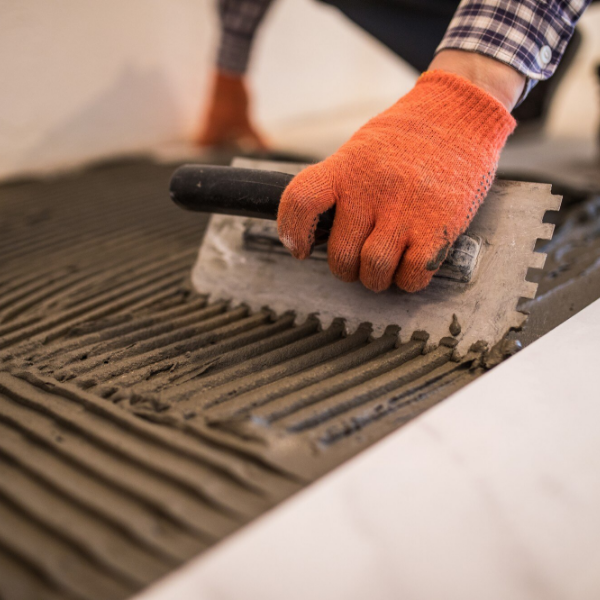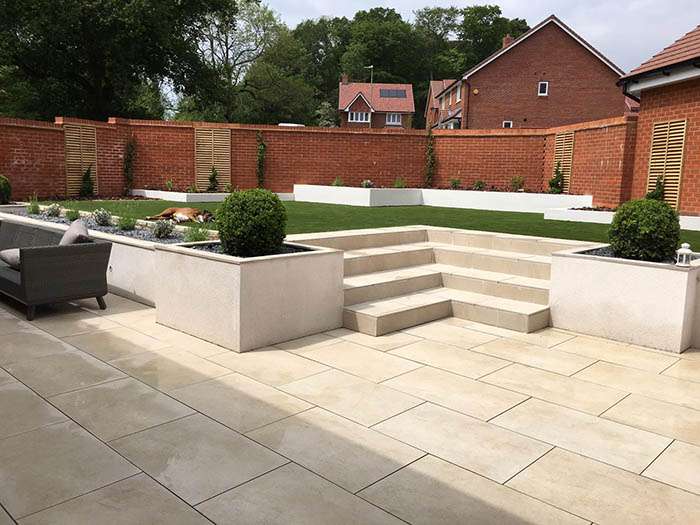- Turf
- Artificial
- Soil
- Timber
- Composite Decking
- Paving & Stone
Get In Touch With Our Experts Today!
Give us a Call! - Seed & Fertiliser
- Dressing
- Bark

January 08, 2025
Porcelain paving is quickly becoming a popular choice for landscaping gardens and open spaces. Offering all the aesthetic advantages of natural stone but without the need to seal each slab. Making them a low-maintenance solution to transform and modernise your garden.
In this article, we’ve pulled together hints and tips from our stone and landscaping experts to lay the perfect porcelain patio. As well as the equipment and materials you’ll need to easily and effectively lay porcelain slabs. Whether you’re laying a patio or pathway, the process remains the same: ground preparation, sub-base, mortar, primer, slabs and joining compound – it’s that simple!
Like other stone paving, porcelain slabs require strong, sturdy and even surfaces. A sand base is ideal for porcelain slabs as it evenly distributes the weight and helps with drainage. However, sand bases will require a layer of mortar and a bonding agent for porcelain. You can also lay porcelain on a concrete surface, but if the concrete cracks, you run the risk of it impacting your porcelain paving.
The biggest appeal for porcelain slabs is that they fit perfectly with contemporary gardens and modern lifestyles. With gardens becoming smaller and life becoming busier, the need for low-maintenance gardens is a must. Enter porcelain paving – the easy-to-lay and clean and highly stylish solution to landscaping your garden. Read our latest blog for all the benefits of incorporating porcelain paving into your landscaping.

Ordering your porcelain paving couldn’t be easier with George Davies! You can either order directly from our website or call our customer service team to place your order and book the best delivery date for you. You can also head to our Olney or St Albans branch to view our stone products on display. Our stone specialists will be on hand to help and answer any of your questions.
CALL US NOW ON 01234 818 253